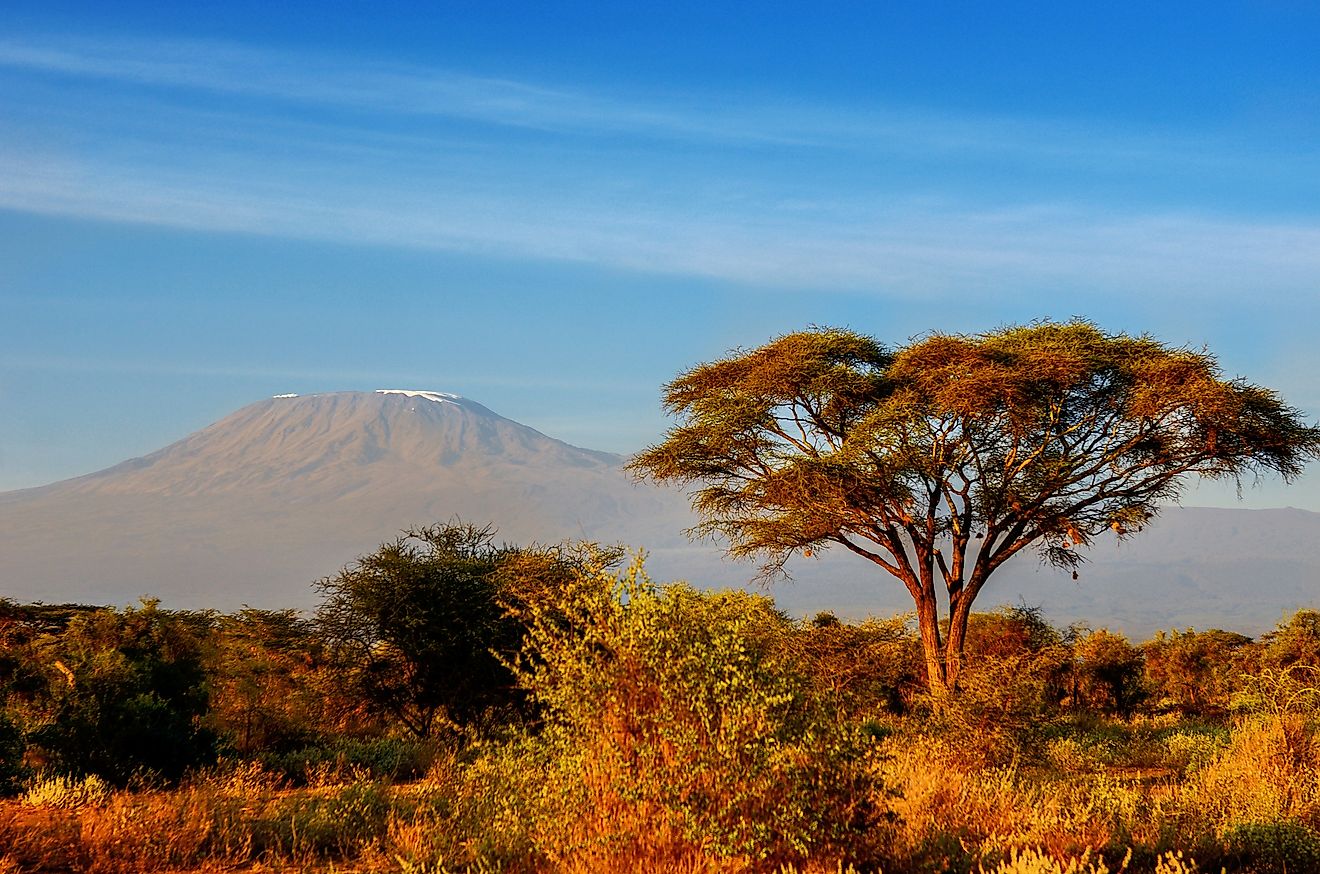Native Amphibians Of Tanzania

Tanzania is a country that is located in East Africa that is noted for its vast wilderness. It is renowned for its safari landscapes, stunning rainforests and Mt. Kilimanjaro, the tallest mountain in the world. The country's vast wildness, rainforests, rivers and lakes make it a natural home for many different species of native and endemic amphibian species, many of which are in danger. This article will discuss a few of these species and their physical characteristics, habitats and ranges, as well as their current conservation status and the major threats that they face.
The native amphibians of Tanzania:
Kihansi Spray Toad
The Kihansi Spray Toad, scientific name Nectophrynoides asperginis, is a species of small toad that is a member of the Bufonidae family of true toads. Adults males of the species can grow be up to 0.75 inches, while females can reach 1.1 inch. The species has yellow skin, with a brownish colored dorsolateral striping and males also having dark colored inguinal patches on their sides. This species was only found at between the 600 to 940 meters above sea level in the spray zone of the Kihansi Falls, which are located in the Kihansi Gorge as part of the Udzungwa Mountains. This was the only place in the world where the species was known to be found, meaning that it was endemic to Tanzanian. According to the International Union for Conservation of Nature (IUCN) Red List, the Kihansi Spray Toad has been extinct in the wild since 2009. There are efforts that have been underway before the species was declared extinct in the wild, as since 2000 the Tanzanian government has allowed the Toledo and Bronx Zoos in America to collect members of the species to start a breeding program. Since 2010 the University of Dar es Salaam in Tanzania has also started a breeding program. Starting in 2012 some of these toads have been sent back to Tanzania to be retained in a facility by the Kihansi Gorge and some have been slowly reintroduced back in the wild.
Morere's Banana Frog
The Morere's Banana Frog, scientific name Afrixalus morerei, is a species of frog that is a member of the Hyperoliidae family of sedge and bush frogs. The adults of this species grow to be between 0.82 to 0.90 inches in length. The species is has a light bronze colored upperside, with two brown stripes that run along its sides from its eyes to the vent and a single brown colored band in the middle of each leg. This species is found in the marshy sections of open montane grasslands as well as in the grassy glades of forest mosaic regions. This species is endemic to Tanzania and is only found in the localities of Dabaga and Uzungwa Scarp in the Udzungwa Mountains. According to the IUCN Red List, Morere's Banana Frog has been listed as a vulnerable species since 2004 and it current population trend is unknown. The major threats that they species faces is the loss of its habitat from expanding human settlement into the area, as well as from fire, agricultural and afforestation where trees are being place in areas that had none.
Nyingwa Caecilian
The Nyingwa Caecilian, scientific name Scolecomorphus uluguruensis, is a species of caecilian and a member of the Scolecomorphidae tropical or African caecilians. A caecilian is a limbless, serpentine like group of amphibians, not to be confused with reptile snakes. Adults of this species can range in length from 5.74 to 12,24 inches, with female generally being larger than males. The species has a upper side that is a dark colored blue or black, while its belly is grey or black colored and it has a pink colored throat and vent. This species is found in the soil of montane forests at a height of between 1,800 to 2,050 meters above sea level in the Uluguru Mountains and is endemic to the country of Tanzania. According to the IUCN Red List, the Nyingwa Caecilian has been listed as a endangered species since 2015 and its current population trend is unknown.
What is being done to help the native amphibians of Tanzania:
There are many things that are being done to help the native amphibians of Tanzania, many of which are endangered species. As can be seen in the case of the Kihansi Spray Toad there are efforts underway nationally and internationally to have breeding programs in place to help bring up the population and try to save species that are endangered or worse. There are also protected areas and national parks that have been set up across the country, like the Udzungwa Mountains National Park or the Uluguru Nature Reserve, where all three of the species discussed in this article are located.
Native Amphibians Of Tanzania
| Native Amphibians of Tanzania | Scientific Name |
|---|---|
| Usambara Torrent Frog | Arthroleptides martiensseni |
| Morere's Banana Frog | Afrixalus morerei |
| Southern Torrent Frog | Arthroleptides yakusini |
| Banded Caecilian | Scolecomorphus vittatus |
| Mangasini Frog | Poyntonophrynus parkeri |
| Argus Reed Frog | Hyperolius argus |
| Nyingwa Caecilian | Scolecomorphus uluguruensis |
| Kihansi Spray Toad | Nectophrynoides asperginis |
| Mazumbai Warty Frog | Callulina kisiwamsitu |
| Lesser Banana Frog | Afrixalus stuhlmanni brachycnemis |











